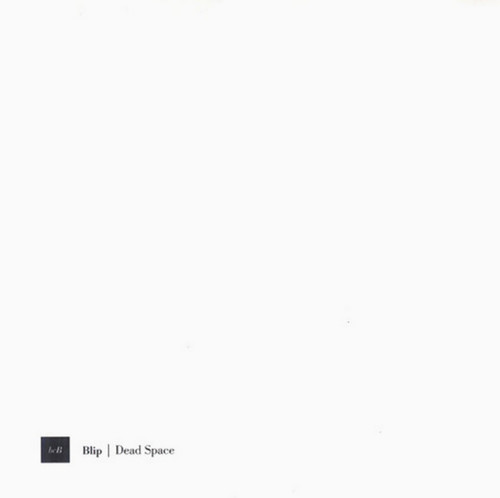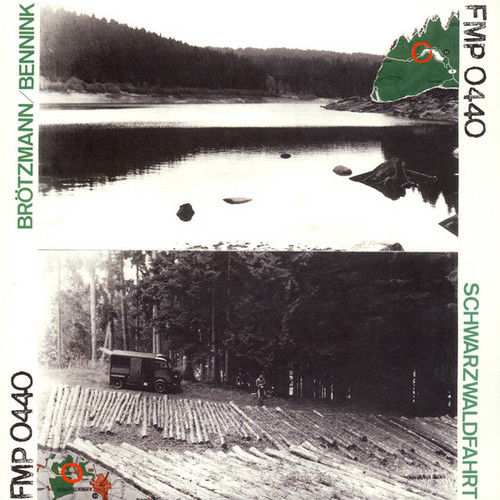Jazz /
Dead Space
Blip is a duo collaboration between Jim Denley and Mike Majkowski: two of Australia's most prominent improvising musicians. They began playing together in 2002, as members of The Splinter Orchestra, and formed Blip in 2009. They have been developing their own approach to the woodwinds/strings duo arrangement, deconstructing and reconstructing this format. Blip music focuses on duration, the subtleties of sound, the pitch within timbre and texture, as well as pulse. Wi
The holistic worlds of
Michael Wintsch, piano, synthesizer. Christian Weber, bass. Christian Wolfarth, drums. Ten years ago Michel Witsch (piano, synthesizer), Christian Weber (bass) and Christian Wolfarth (drums) met - 3 musicians who have not only shaped the European scene of improvisation in the most different formations but who also catch an ear with the maybe most relevant aspect in music whatsoever: SOUND. Wintsch, Weber and Wolfrath make music with a breathtaking mental vigor. The long time working band has…
Scraps And Shadows
Scraps And Shadows is the second album by the dream pairing of Joe McPhee and Chris Corsano. A follow-up to Under A Double Moon, which featured McPhee’s alto saxophone, Scraps And Shadows finds him largely on tenor. Recorded live in Milwaukee in 2011, the album consists of seven dedicatory pieces, from the delicate balladry of “For Adrienne P” to the appropriately combustible “For Han Bennink.” Corsano’s stupendously detailed drumming and McPhee’s free-soul love cries weave a master latti…
Letter To A Stranger
Ken Vandermark and Paal Nilssen-Love are back with another amazing album. This time a studio recording, recorded in Chicago's Strobe Recording in January 2011. The album contains 10 new compositions of their characteristic soulfully groovy free jazz. Vandermark & Nilssen-Love use free improvisation as a means to explore all levels of dynamics, density, rhythm, timbre, form and tonality. The results of their work are experienced as intense, exhilarating, and boundary breaking. Raw music with brut…
Age Of Energy
This year marks a milestone for the Chicago Underground Duo. It is their 15th year together as a band. In celebration of this momentous occasion they have released a new record on a brand new label.Age of Energy is Chad Taylor and Rob Mazurek’s sixth release as Chicago Underground Duo and the twelfth release in the Chicago Underground catalog. Finding time to get back in the studio was a challenge, as Rob has been touring with his trio Starlicker, The Sao Paulo Underground and the Exploding Sta…
Double Demon
What mischief can be made with just cornet, vibraphone and drums. Rob Mazurek has scaled back considerably since Stars Have Shapes, the 2010 record from his Exploding Star Orchestra. His new project, the curiously named Starlicker, is a mere trio, with Chicago vibraphonist Jason Adasiewicz and Tortoise drummer John Herndon. But this group emits more sound and energy than do some sextets. Double Demon is Out to Lunch! for a new generation. Powered by Herndon’s hyperkinet…
Altitude
Altitude is one of two live recordings to be released in July 2012 as part of the celebration of AUM Fidelity’s 15th anniversary. It documents the first-ever performance by esteemed veteran improvisers Joe Morris, William Parker and Gerald Cleaver as a trio during label founder Steven Joerg’s two-week run curating The Stone in New York during June 2011.
Collectively, Morris, Parker and Cleaver have appeared on hundreds of recordings, including a variety of prominent releases on AUM Fidelity, but…
Kampanerura
Kampanerura is the name of a boy appearing in the children's story Night on the Galactic Railroad by Kenji Miyazawa (1896-1933), Japanese poet and author of children's literature. A boy with pure soul transmigrates and becomes a dissipated man around a trip to the bottom in Asia. From accompanying text by Masayoshi Urabe 'What are my legs on? What are my feet standing on? Sand? I feel something sharp and pointed! And a gentle breeze where am I? The sea? I feel it flowing! I've crossed ove…
Mune
Claire Bergerault, voice. Jean-Luc Guionnet, pipe organ. 'Music that proves that improvisation can still offer something vibrant and different. Intense, powerful music that will annoy as many as it delights.' Highly recommended !
Gaycre (2)
Xavier Charles : clarinet, Michel Doneda : saxophone, Jean Pallandre : microphones. Following the first meeting in 1997, they went back to the same places to record again an incredible meeting of soundscape !
The Black Ark
Recorded in 1969 and released in 1973 by Freedom Records, is one of the monumental second generation free jazz recordings, and sadly a very difficult LP to get hold of. One of free jazz's more enigmatic figures, alto saxophonist Noah Howard has been documented so infrequently on record. Now based in Brussels, Noah has been blowing for over 30 years. Born In New Orleans in 1943, Noah started playing on trumpet (the instrument he played in the military during the early 60s), but moved on to the al…
Le retour de
Jac Berrocal, voice & trumpet, Jean-Noël Cognard, drums & percussion, Philippe Thiphaine, guitar (from Heliogabale), Quentin Rollet, alto saxophone, Ben Ajrab, bass, Rivkah, voice & keyboard.
Centering
Milestone! The music on these six discs comes from roughly the first decade of William Parker's career, one of the most intensely creative periods enjoyed by any musician of any era. William Parker's Centering (No Business CD 42-47), as the subtitle makes clear, is composed entirely of Unreleased Early Recordings 1976-1987. It's six CDs in all, with booklet and attractive slipcase.What makes all that important? It's William Parker the superb bassist, jazz composer and bandleader at his very bes…
as : is
It was recorded in Bruxelles 2011, has been mixed and mastered by Sabine Ercklentz. A trio recording of forceful fragility, new sounds mixing, acoustic instruments meeting electronics. Random sounds taken care of. Creating 7 different pieces, each one of them representing its own personality. It is very dense and lo-fi. Christine Abdelnour has been one of the front figures in the last years with her new sounds on saxophone. Andrea Neumann is one of the original creators of the Berlin Scene no fu…
Myriad
Mayas frames her instrument not as 88 keys arranged in tidy scales, but as a sonorous tangle of wood and wire, she produces sounds with a wide dynamic range, playing the whole piano, inside and out, including dramatic percussive effects from banging and scraping the frame of the instrument and the strings. Abdelnour has developed extended techniques and complex patterns of sound production, exploring the microtonal aspects of the saxophone and its high-pitched tones. she employs subtle tonguing…
I Love It When You Snore
Mats Gustafsson is perhaps the pre-eminent saxophonist of this post-free jazz/improv era. A perfect combination of Peter Brotzmann's fiery passion, Evan Parker's extended technique and Ken Vandermark's willingness to explode genre boundaries, Gustafsson's discography spans over two decades and sports numerous must-hear recordings with a long laundry list of collaborators, including such luminaries as Brotzmann, Vandermark, Joe McPhee, Jim O'Rourke, Derek Bailey, Sonic Youth and The Ex. Illustrio…
New Sights, Old Sounds
A much-needed reissue of Derek Bailey's 1978 2-CD Japanese release on the Morgue label, the first disc a series of studio improvisations and the second presenting two live performances in Nagoya and Kalavinka.Recorded and originally issued in Japan in 1978, the contents of this two-disc set quickly became something of a collector's item as the album quickly went out of print. Happily, the master tapes were reacquired for release on Incus in 2002, providing further documentation of a rich portion…
The sacrifice for the music became our lifestyle
Chris Abrahams, upright piano. Kai Fagaschinski, b-flat clarinet. Cover painting & sleeve design by Zev Langer. How do you run a duo when both of its protagonists are living at two opposite ends of the planet ? Well, it's not that dramatic. For many years Chris has used his European tours as a springboard for extended stays in Kai's hometown of choice, Berlin. After appreciating each other's work for quite a while they began collaborating at a friend's piano-armed kitchen in 2007. While C…
The Nearer the Bone, the Sweeter the Meat
180 gram vinyl, originally released in 1979 on the FMP label. Peter Brötzmann on soprano, alto, tenor saxophone, clarinet, bass clarinet; Harry Miller on double bass, and Louis Moholo on drums. Recorded by Jost Gebers on August 27th, 1979 at the FMP-Studio in Berlin. Produced by Peter Brötzmann and Jost Gebers.
"Brötzmann is a musician of character, who has been blazing his own trail for several years now, and it's true to say that he and his companions have created their own musical environment…
Schwarzwaldfahrt
180 gram vinyl reissue of this LP, originally released by FMP in 1977. Peter Brötzmann and Han Bennink -- e-flat clarinet, b-flat clarinet, bass clarinet, soprano saxophone, alto saxophone, birdcalls, viola, banjo, cymbals, wood, trees, sand, land, water, air. Recorded open air on a Stellavox recorder by Peter Brötzmann and Han Bennink from May 9th to 11th, 1977 in the Black Forest near Aufen and the Schwarzenbach Talsperre. Produced by Peter Brötzmann and Jost Gebers.








